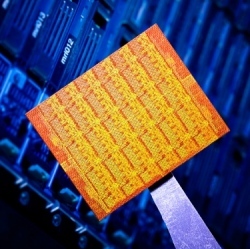
A team of engineers from Stanford University has designed a computer that relies on carbon nanotubes, offering a way around the limitations of traditional silicon semiconductors that threaten an end to performance advances.
In a report published in Nature magazine, Stanford doctoral student Max Shulaker and his fellow students, Gage Hills, Nishant Patil, Hai Wei and Hong-Yu Chen, along with Stanford professors Subhasish Mitra and H.S. Philip Wong, describe their work.
Carbon nanotubes are, as their name suggests, nanoscale tubes made of the element carbon. A nanometer (nm) is 1 billionth of a meter, and about 10,000 times thinner than a human hair. Nanotubes themselves come in varying diameters, from less than 1 nm to about 50 nm. Their lengths have tended toward thousands of nanometers, or microns, though recent advances have extended nanotube measurements into the centimeter range.
They are all exceedingly small and difficult to work with. The Stanford researchers’ achievement involved developing a manufacturing process that can eliminate defective and misaligned nanotubes without having to look for them. In essence, they created an automated way to find tiny needles in very, very small haystacks.
The computer that the researchers designed is rudimentary. It’s intended as a proof-of-concept rather than a production model. Nevertheless, it is "Turing Complete," meaning it is a system that can run arbitrary code and solve any computational problem, given enough time.
It uses 178 transistors, each of which contains between 10 and 200 carbon nanotubes. It can perform four basic operations that allow it to do things like count and sort numbers. It can run two programs at the same time.
An actual commercial computer based on carbon nanotubes is still many years away. It took a decade and a half to move from the first nanotube transistors to a prototype nanotube computer.
